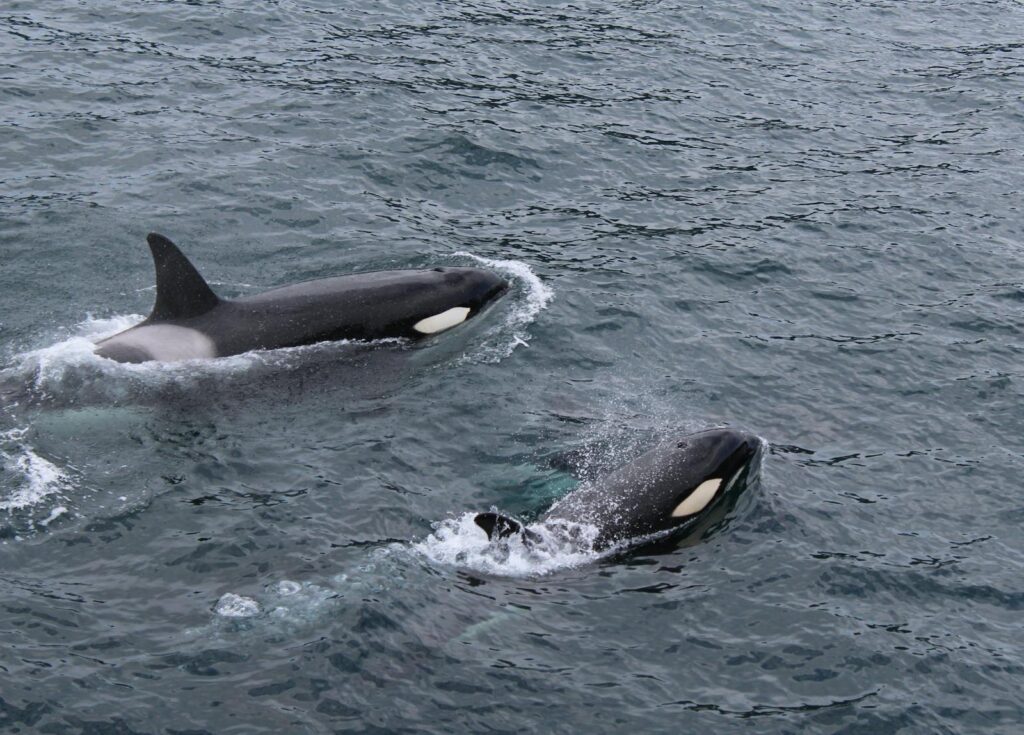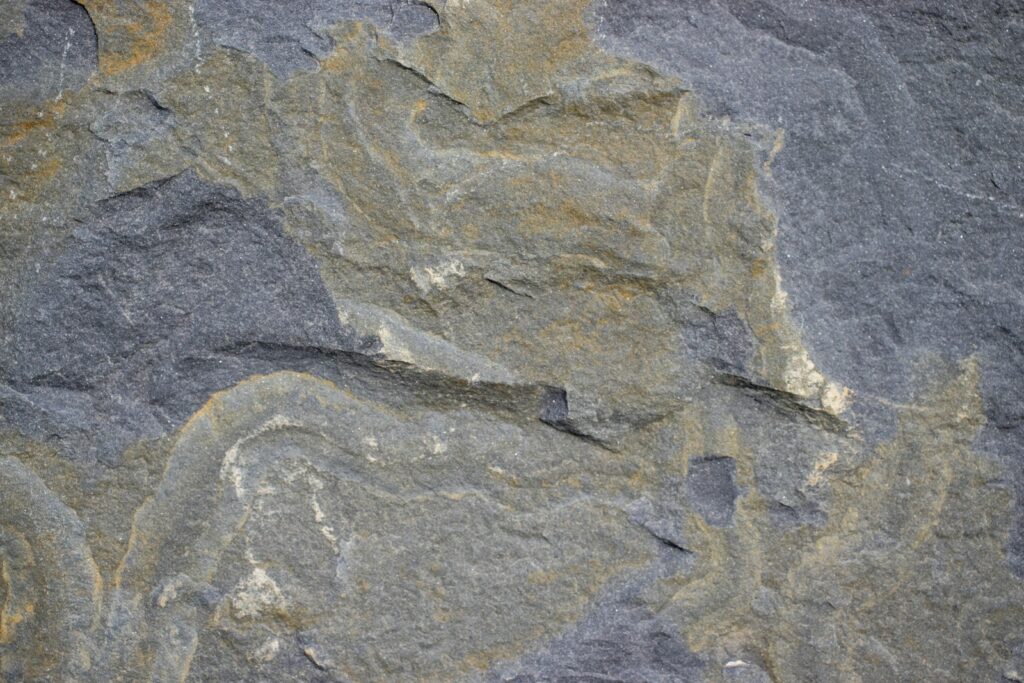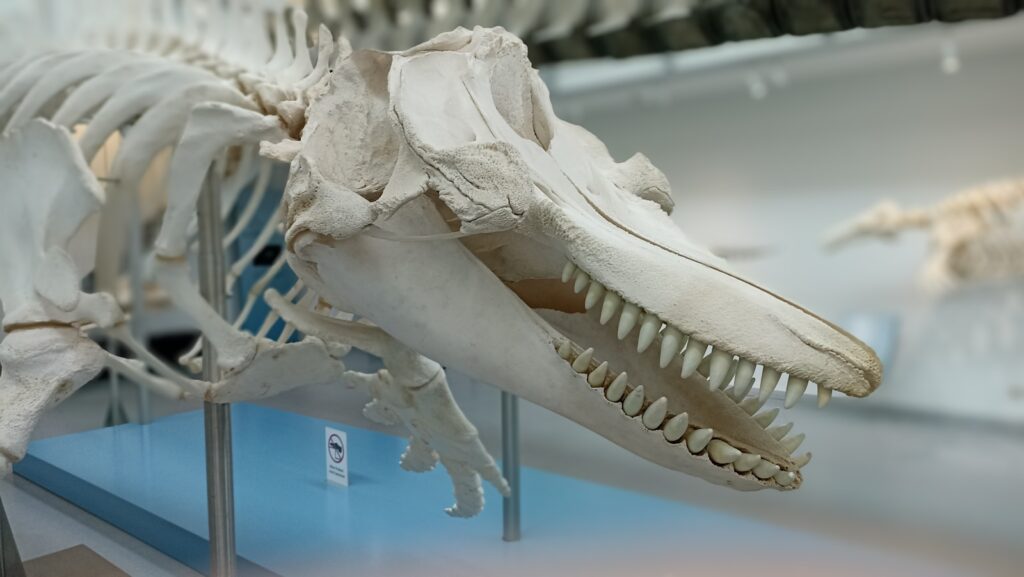Ichthyosaurs, the dolphin-like marine reptiles that dominated ancient oceans for over 150 million years, have long fascinated paleontologists with their remarkable adaptations for aquatic life. While their streamlined bodies clearly marked them as efficient swimmers, exactly how these prehistoric predators hunted their prey has remained partially shrouded in mystery. Recent fossil discoveries, however, are illuminating the hunting strategies of these ancient marine reptiles with unprecedented clarity.
From specialized sensory systems to sophisticated swimming techniques, new evidence is helping scientists reconstruct the predatory behaviors that made ichthyosaurs such successful hunters across the Mesozoic Era. These discoveries not only enhance our understanding of extinct ecosystems but also provide insights into the evolution of predation strategies in marine environments throughout Earth’s history.
The Evolutionary Journey of Ichthyosaurs

Ichthyosaurs first appeared in the early Triassic period, approximately 250 million years ago, evolving from terrestrial reptiles that returned to the sea. Their evolutionary trajectory represents one of the most remarkable examples of adaptation in vertebrate history, as they underwent profound anatomical modifications to thrive in marine environments. Early ichthyosaurs retained some features of their land-dwelling ancestors but rapidly developed streamlined bodies, paddle-like limbs, and dorsal fins that converged remarkably with modern dolphins and tuna.
This evolutionary journey spanned over 150 million years until their extinction in the late Cretaceous period, during which time they diversified into numerous species occupying various ecological niches. Understanding this evolutionary context provides crucial insights into how their hunting strategies developed and specialized over time as they adapted to changing marine ecosystems and prey species.
Breakthrough Fossil Discoveries Rewriting the Narrative

Recent years have witnessed several groundbreaking ichthyosaur fossil discoveries that have substantially enhanced our understanding of their hunting behaviors. In 2021, exceptionally preserved specimens from the Posidonia Shale in Germany revealed stomach contents with unprecedented detail, including preserved hooks from belemnites (squid-like cephalopods) and fish scales arranged in their original digestive position. A spectacular find from the Tyndall Limestone in Canada included an ichthyosaur with the remains of another smaller marine reptile in its abdominal cavity, providing direct evidence of predation on relatively large prey.
Perhaps most significant was the 2022 discovery in the Swiss Alps of a giant ichthyosaur specimen exceeding 70 feet in length, challenging previous assumptions about size limitations and hunting capabilities. These fossil treasures, often preserved with soft tissues and stomach contents intact, allow paleontologists to reconstruct feeding behaviors with a level of detail previously thought impossible for animals that lived over 150 million years ago.
Visual Adaptations for Underwater Predation

Among the most remarkable adaptations of ichthyosaurs were their extraordinarily large eyes, which in some species reached nearly 10 inches in diameter—the largest of any vertebrate animal, living or extinct. New fossil analyses have revealed unprecedented details about these visual organs, including the presence of scleral rings (bony plates supporting the eyeball) that indicate adaptation to deep diving and low-light conditions. Recent studies of optic nerve channels and brain cavity casts suggest ichthyosaurs possessed exceptional visual acuity, capable of detecting prey movement at considerable distances in murky waters.
Particularly fascinating is evidence that some species may have possessed specialized retinal structures similar to those in modern deep-diving marine mammals, potentially allowing them to detect bioluminescent prey in deeper ocean zones. These visual adaptations would have given ichthyosaurs a significant hunting advantage, particularly in the relatively low-light conditions that prevailed in many of their habitats.
Jaw Mechanics and Feeding Strategies

Advanced biomechanical modeling based on recently discovered fossils has revolutionized our understanding of ichthyosaur feeding mechanisms. Different ichthyosaur species exhibited remarkable variation in jaw structure, from the needle-toothed jaws of Temnodontosaurus specialized for grasping slippery prey to the robust, crushing dentition of Shastasaurus adapted for hard-shelled organisms. High-resolution CT scanning of exceptionally preserved skull specimens has revealed previously unknown details about jaw musculature attachments, suggesting some species could generate tremendous bite forces while others specialized in rapid jaw closure.
Particularly illuminating has been the discovery of wear patterns on fossilized teeth that indicate specific feeding behaviors—some showing signs of prey-processing behaviors previously unknown in reptiles. The evidence suggests that within the ichthyosaur lineage, different species evolved specialized feeding strategies that allowed them to partition food resources and coexist in the same marine ecosystems, much like modern oceanic predators.
Swimming Capabilities and Pursuit Predation

Recent biomechanical studies have transformed our understanding of ichthyosaur swimming capabilities, revealing them as among the most efficient aquatic locomotors in vertebrate history. Analysis of vertebral columns and tail structures from newly discovered specimens indicates that some ichthyosaur species could sustain speeds comparable to modern dolphins, potentially reaching bursts of 25 mph during prey pursuit.
Particularly significant has been the identification of specialized muscle attachment sites on well-preserved specimens, suggesting powerful caudal propulsion systems more advanced than previously recognized. Computer modeling based on these fossils has demonstrated that the crescent-shaped tail flukes of advanced ichthyosaurs generated substantial thrust with minimal energy expenditure, ideal for both extended patrolling and explosive acceleration when prey was detected. These adaptations would have allowed ichthyosaurs to employ pursuit predation strategies, chasing down prey over considerable distances rather than relying solely on ambush tactics.
Stomach Content Revelations: The Menu of Ancient Seas

Perhaps the most direct evidence of ichthyosaur hunting behaviors comes from exceptionally preserved stomach contents, which have yielded surprising insights into their dietary preferences. Recent discoveries include specimens containing dozens of belemnite hooks arranged in distinctive patterns, suggesting ichthyosaurs consumed these cephalopods whole and in large quantities during feeding frenzies. Other specimens have revealed fish remains with scales still articulated, indicating rapid consumption and efficient digestion systems.
Particularly surprising has been the discovery of juvenile marine reptile remains in some ichthyosaur abdominal cavities, conclusively demonstrating that larger species engaged in predation on other reptiles rather than focusing exclusively on fish and cephalopods. Chemical analysis of fossilized tissues has further revealed isotopic signatures that suggest some ichthyosaur species were apex predators occupying the highest trophic levels in their ecosystems, while others specialized in specific prey types at intermediate levels—evidence of sophisticated niche partitioning among these marine reptiles.
Sensory Systems Beyond Vision: Detecting Prey Through Other Means

While ichthyosaurs’ massive eyes have long been recognized as their primary hunting tool, recent fossil discoveries suggest they possessed additional sensory capabilities that enhanced their predatory prowess. Analysis of cranial endocasts—three-dimensional representations of brain cavities—indicates enlarged areas associated with both hearing and balance, suggesting sophisticated auditory capabilities potentially used for prey detection.
Particularly intriguing is evidence from newly discovered specimens showing specialized nerve channels similar to those found in modern sharks and some marine mammals that may have housed electroreceptive organs capable of detecting the minute electrical fields generated by prey animals.
Some specimens also show evidence of an enhanced olfactory system that could have detected chemical signatures in the water, potentially allowing tracking of prey concentrations over long distances. These multi-sensory hunting capabilities would have made ichthyosaurs extraordinarily effective predators across different marine environments and light conditions.
Pack Hunting Evidence: Social Predators of the Mesozoic

One of the most revolutionary recent discoveries in ichthyosaur research has been evidence suggesting some species may have engaged in coordinated group hunting behaviors, challenging the long-held view of them as primarily solitary predators. Multiple fossil beds discovered in Nevada and Chile have yielded aggregations of ichthyosaur specimens preserved together, with taphonomic evidence ruling out post-mortem accumulation as an explanation. Particularly compelling is a site containing five Shonisaurus specimens arranged in a pattern suggesting coordinated swimming formation at time of death.
Analysis of tooth marks on prey specimens has further revealed patterns consistent with multiple individuals feeding on the same prey item in succession—behavior observed in modern social marine predators like orcas. Brain endocast studies showing enlarged social processing regions in the brains of some ichthyosaur species provide further support for complex social behaviors, potentially including coordinated hunting strategies that would have allowed them to pursue larger prey than individual hunters could manage alone.
Specialization Among Different Ichthyosaur Species

The ichthyosaur lineage exhibited remarkable ecological diversification, with different species evolving specialized hunting strategies for distinct prey types and habitats. Recent comparative analysis of over 100 ichthyosaur species has revealed a spectrum of specializations previously unrecognized in the fossil record. Small-bodied species like Stenopterygius possessed elongated jaws with numerous needle-like teeth, perfectly adapted for capturing schools of small fish with rapid strikes.
Medium-sized forms like Ophthalmosaurus developed intermediate adaptations suitable for pursuing a mixed diet of fish and squid-like cephalopods in mid-water environments. The truly massive ichthyosaurs like Shastasaurus and Thalattoarchon, some exceeding 50 feet in length, evolved as apex predators capable of taking large prey, including other marine reptiles. This ecological specialization allowed multiple ichthyosaur species to coexist without direct competition, creating complex food webs similar to those observed in modern oceanic ecosystems but dominated by reptiles rather than mammals.
Deep Diving Capabilities: Hunting in the Abyss

Among the most surprising recent discoveries has been evidence that certain ichthyosaur species were capable of deep diving to hunt prey unavailable to other marine predators of their era. Analysis of bone density patterns in newly discovered specimens shows adaptations similar to those in modern deep-diving whales, including highly dense bone structures that would have facilitated descent to significant depths. Oxygen isotope studies of fossilized tissues have further revealed signatures consistent with regular excursions to colder, deeper waters, potentially exceeding depths of 1,500 feet in some species.
Particularly compelling has been the discovery of ichthyosaur specimens with preserved stomach contents containing deep-water species of fish and cephalopods that would not have been accessible without significant diving capabilities. Eye structure analysis has revealed adaptations for low-light vision, including unusually large pupils and specialized retinal arrangements that would have permitted effective hunting in the dimly lit mesopelagic zone—a capability that would have given them access to food resources unavailable to most other Mesozoic marine predators.
Hunting Strategies Through Life Stages

Recent discoveries of ichthyosaur specimens representing different growth stages have revealed fascinating insights into how their hunting strategies evolved throughout their lives. Juvenile specimens often show proportionally larger eyes and different tooth morphologies than their adult counterparts, suggesting they targeted different prey items during early life stages. Analysis of growth rings in bones from well-preserved specimens indicates rapid growth during youth, with corresponding shifts in dental and cranial features that reflect changing dietary preferences as individuals matured.
Particularly noteworthy has been the discovery of nursing ichthyosaur mothers with juveniles, confirming live birth (viviparity) and suggesting extended parental care that likely included hunting instruction similar to that observed in modern dolphins and whales. This extended developmental period would have allowed young ichthyosaurs to learn sophisticated hunting techniques from adults, potentially explaining the remarkable success of these marine reptiles across multiple extinction events that eliminated many other marine predators.
The End of an Era: Extinction and Hunting Efficiency

The extinction of ichthyosaurs approximately 90 million years ago—well before the end-Cretaceous mass extinction that claimed the dinosaurs—has long puzzled paleontologists, but recent findings suggest their highly specialized hunting adaptations may have contributed to their downfall. New fossil evidence indicates that during the mid-Cretaceous period, significant oceanic changes occurred, including shifts in prey species composition and the rise of new competing marine predators like mosasaurs.
Analysis of the final ichthyosaur species shows increasingly specialized feeding adaptations that may have reduced their dietary flexibility, making them vulnerable to ecosystem changes. Particularly revealing has been the discovery that late ichthyosaur species showed less morphological diversity than their earlier counterparts, suggesting narrowing ecological niches rather than continued adaptive radiation. The very hunting specializations that had made ichthyosaurs so successful for over 150 million years may have ultimately limited their ability to adapt to changing ocean conditions, leading to their gradual replacement by more generalized marine predators with greater dietary flexibility.
Modern Analogues: Comparing Ichthyosaur Hunting to Today’s Marine Predators

Comparing ichthyosaur hunting strategies with those of modern marine predators has proven remarkably informative, highlighting both convergent evolution and unique adaptations. Recent biomechanical studies have shown striking similarities between ichthyosaur propulsion systems and those of tuna and dolphins, despite their completely independent evolutionary origins. Eye structure comparisons reveal parallels with modern deep-diving sperm whales, while dental adaptations show convergence with both dolphins and sharks depending on the species.
Particularly fascinating has been the recognition that some ichthyosaur hunting strategies have no modern equivalent—such as the combination of reptilian cold-bloodedness with sustained high-speed swimming, a physiological paradox that modern reptiles cannot achieve. These comparative studies demonstrate that while ichthyosaurs converged on many solutions similar to today’s marine predators, they also developed unique hunting approaches tailored to Mesozoic marine ecosystems. Understanding these similarities and differences provides valuable insights into the fundamental principles of predator evolution and the constraints that shape hunting strategies in marine environments across geological time.
Future Research Directions: What Still Remains to Be Discovered

Despite remarkable recent advances, significant questions about ichthyosaur hunting behaviors remain unanswered, directing future research efforts in several promising directions. New fossil-hunting expeditions are targeting previously unexplored Mesozoic marine deposits in regions like Argentina, Russia, and China, which may yield specimens that further clarify regional specializations and hunting adaptations.
Advanced technologies like neutron scanning and synchrotron radiation analysis promise to reveal previously invisible details in existing fossils, potentially including preserved neural tissues and sensory structures that could further illuminate hunting capabilities. Isotopic studies of growth layers in ichthyosaur teeth are beginning to reveal seasonal hunting patterns and migration behaviors that are still poorly understood.
Perhaps most exciting is the application of sophisticated computational fluid dynamics modeling to ichthyosaur locomotion, which may finally resolve questions about maximum sustainable swimming speeds and hunting endurance. As these research frontiers advance, our understanding of how these remarkable marine reptiles hunted will continue to evolve, providing ever more detailed insights into the predatory behaviors that allowed ichthyosaurs to dominate Mesozoic oceans for longer than any other marine reptile lineage in Earth’s history.
Conclusion

The hunting strategies of ichthyosaurs represent one of paleontology’s most fascinating evolutionary narratives—a story of terrestrial reptiles returning to the sea and developing sophisticated predatory adaptations that allowed them to thrive for over 150 million years. From their extraordinary visual capabilities to their specialized locomotion and potential for social hunting, ichthyosaurs exemplify the remarkable adaptability of life on Earth.
As new fossil discoveries continue to emerge and analytical techniques advance, our understanding of these ancient marine hunters grows increasingly sophisticated, revealing them not as simple prehistoric predators but as complex, specialized hunters whose ecological roles helped shape marine ecosystems throughout the Mesozoic Era. The ongoing research into ichthyosaur hunting behaviors not only illuminates a fascinating chapter of Earth’s past but also provides valuable perspectives on the evolution of predation strategies across vertebrate lineages.




